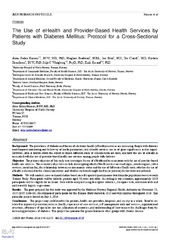Occupational health and health care in Russia and Russian Arctic: 1980–2010
Permanent link
https://hdl.handle.net/10037/6081Date
2013Type
Journal articleTidsskriftartikkel
Peer reviewed
Abstract
Background. There is a paradox in Russia and its Arctic regions which reports extremely low rates of
occupational diseases (ODs), far below those of other socially and economically advanced circumpolar
countries. Yet, there is widespread disregard for occupational health regulations and neglect of basic
occupational health services across many industrial enterprises.
Study design and methods. This review article presents official statistics and summarises the results of a search
of peer-reviewed scientific literature published in Russia on ODs and occupational health care in Russia and
the Russian Arctic, within the period 1980 2010.
Results. Worsening of the economic situation, layoff of workers, threat of unemployment and increased work
load happened during the ‘‘wild market’’ industrial restructuring in 1990 2000, when the health and safety of
workers were of little concern. Russian employers are not legally held accountable for neglecting safety rules
and for underreporting of ODs. Almost 80% of all Russian industrial enterprises are considered dangerous or
hazardous for health. Hygienic control of working conditions was minimised or excluded in the majority of
enterprises, and the health status of workers remains largely unknown. There is direct evidence of general
degradation of the occupational health care system in Russia. The real levels of ODs in Russia are estimated
to be at least 10 100 times higher than reported by official statistics. The low official rates are the result of
deliberate hiding of ODs, lack of coverage of working personnel by properly conducted medical examinations,
incompetent management and the poor quality of staff, facilities and equipment.
Conclusions. Reform of the Russian occupational health care system is urgently needed, including the passing
of strong occupational health legislation and their enforcement, the maintenance of credible health
monitoring and effective health services for workers, improved training of occupational health personnel,
protection of sanitary-hygienic laboratories in industrial enterprises, and support for research assessing
occupational risk and the effectiveness of interventions.
Publisher
CoAction PublishingCitation
International Journal of Circumpolar Health 72(2013) s. -International Journal of Circumpolar Health (2013), vol 72:20456
Metadata
Show full item recordCollections
The following license file are associated with this item:
Related items
Showing items related by title, author, creator and subject.
-
Cochrane Collaboration Systematic Reviews may be based on trials not approved by a research ethics committee
Jokstad, Asbjørn (Journal article; Tidsskriftartikkel; Peer reviewed, 2017-10-27)Systematic reviews (SR) may potentially contain reports of primary trials with ethical problems. The Cochrane Collaboration SRs are considered as the highest standard in evidence-based health care resources. All SRs completed during the last 5 years (2013–2017) under the management of the Oral Health Group of the Cochrane Collaboration were identified. All primary trials included in the Oral Health ... -
Pembrolizumab as second-line therapy in non-small cell lung cancer in northern Norway: budget impact and expected gain—a model-based analysis
Norum, Jan; Antonsen, Margaret Aarag; Tollåli, Geir; Al-Shibli, Khalid; Andersen, Gry; Svanqvist, Kristin-Helene; Helbekkmo, Nina (Journal article; Tidsskriftartikkel; Peer reviewed, 2017-07-29)1 Norum J, et al . ESMO Open 2017; 2 :e000222. doi:10.1136/esmoopen-2017-000222 Open Access Abstr A ct Background P embrolizumab is a new drug approved in several countries for second-line therapy in non-small cell lung cancer (NSCLC) being programmed cell death ligand (PD-L1) positive. This drug has a high cost, and the cost- effectiveness ratio has been debated. Patients ... -
The Use of eHealth and Provider-Based Health Services by Patients with Diabetes Mellitus: Protocol for a Cross-Sectional Study
Hansen, Anne Helen; Bradway, Meghan; Brož, Jan; Claudi, Tor; Henriksen, Øystein; Wangberg, Silje C; Årsand, Eirik (Journal article; Tidsskriftartikkel; Peer reviewed, 2016-10-31)<b>Background:</b> The prevalence of diabetes and the use of electronic health (eHealth) resources are increasing. People with diabetes need frequent monitoring and follow-up of health parameters, and eHealth services can be of great significance in this regard. However, little is known about the extent to which different kinds of eHealth tools are used, and how the use of eHealth is associated ...


 English
English norsk
norsk


